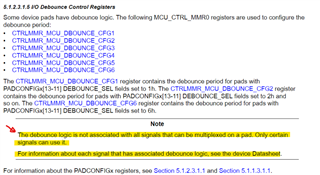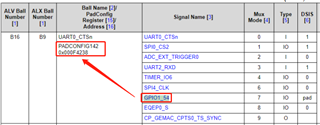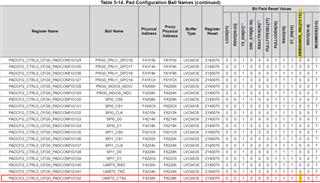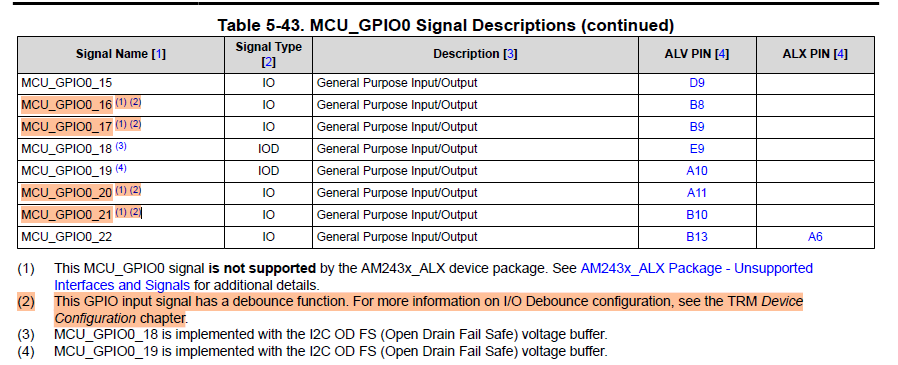Tool/software:
Hi expert,
I studied the AM24x TRM to learn how to use the debounce function for GPIO. The below description said the debounce function is not associated with all signals, so it's necessary to check the datasheet.

Then, I check the AM24x Datasheet, and I found a few gpio signal description with note(1), indicating that these GPIOs have a debounce function, as shown in the example below.

However, I checked the TRM, and all GPIOs have their own PadConfig settings (bits 13–11) to configure the debounce function individually.
PadConfig example : GPIO1_54
1. Data Sheet : it don't mention note(1)

2. GPIO1_54 match to PadConfig 142

3. PadConfig 142 can set debounce

So, I would like to know if all GPIOs can use the debounce function, or if only the GPIO signals marked with note (1) in the datasheet have this capability.
Regards
Bolt


